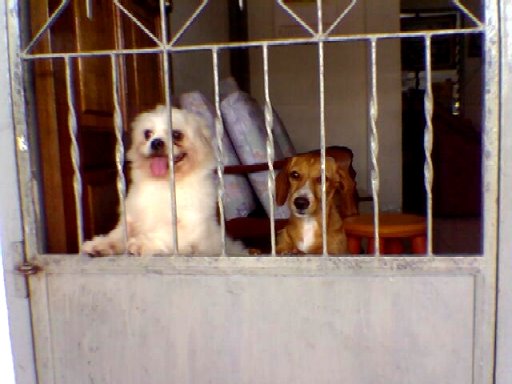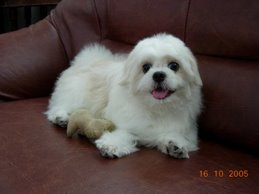TTA Surgery May Be A Wise Choice For Injured Dogs
Most canine owners want to ensure that their dogs live happy, healthy lives. Dogs can suffer from a variety of conditions, some of which involve their bones. An anterior cruciate ligament strain is one of the most common bone injuries among domestic canines. TTA surgery is a procedure used to correct this condition. Although there are other surgeries available, many veterinarians recommend TTA for dogs with cruciate ligament injuries.
The injury mentioned above is not gender related and can happen to any canine. However, it is most often seen in large or medium-sized dogs, and dogs that are overweight. Once a canine reaches middle age, there is a higher chance of the animal experiencing an anterior cruciate ligament disorder. If this type of injury takes place, a partial tear usually occurs in the ligament. This causes a mild instability in the animal's knee.
If a dog that has suffered such an injury is not cared for appropriately, a rupture may occur in the stressed ligament. This can result in damage to different parts of the dog's knee, such as the medial meniscus. The latter cushions the dog's knee and prevents it from becoming damaged when the animal is engaging in physical activity, such as playing or running.
If a total rupture takes place, the animal will probably experience front to back instability in the injured leg. This is frequently called tibial thrust by most veterinarians, and is hallmarked by an internal rotation of the leg's lower half. Pain and arthritis will usually occur because of this instability, unless the leg is not properly treated.
As previously mentioned, a torn or damaged cruciate ligament can only be corrected through surgical procedures. There are several options from which dog owners can choose, but TTA is typically the procedure of choice among most animal doctors. The acronym stands for tibial tuberosity advancement, and it is the newest procedure available for canines suffering from this type of injury.
Many veterinarians favor the procedure because it is not as invasive as conventional canine ligament surgeries. Although it is regarded as major surgery, as it involves cutting into the bone, the incisions are not made in weight bearing regions. The surgical veterinarian cuts the bone at a specific angle and repositions it to alter its relationship with the patellar tendon.
If a person chooses to have an animal doctor perform this procedure, it is important to follow all the instructions after the surgery is completed. For example, the incision must be kept clean and dry. If the veterinarian placed bandages over the affected area, the dog owner should make sure that he or she understands how to change the dressings if this is necessary. Follow-up care is essential, and any subsequent appointments after the procedure must be kept if the dog is to make a full recovery.
Virtually all pet owners want their dogs to be happy and healthy. This goal can be achieved by ensuring that injuries are not overlooked. Those who suspect that their dogs may have an injured anterior cruciate ligament should schedule an appointment with an animal doctor and discuss TTA surgery as a treatment.
The injury mentioned above is not gender related and can happen to any canine. However, it is most often seen in large or medium-sized dogs, and dogs that are overweight. Once a canine reaches middle age, there is a higher chance of the animal experiencing an anterior cruciate ligament disorder. If this type of injury takes place, a partial tear usually occurs in the ligament. This causes a mild instability in the animal's knee.
If a dog that has suffered such an injury is not cared for appropriately, a rupture may occur in the stressed ligament. This can result in damage to different parts of the dog's knee, such as the medial meniscus. The latter cushions the dog's knee and prevents it from becoming damaged when the animal is engaging in physical activity, such as playing or running.
If a total rupture takes place, the animal will probably experience front to back instability in the injured leg. This is frequently called tibial thrust by most veterinarians, and is hallmarked by an internal rotation of the leg's lower half. Pain and arthritis will usually occur because of this instability, unless the leg is not properly treated.
As previously mentioned, a torn or damaged cruciate ligament can only be corrected through surgical procedures. There are several options from which dog owners can choose, but TTA is typically the procedure of choice among most animal doctors. The acronym stands for tibial tuberosity advancement, and it is the newest procedure available for canines suffering from this type of injury.
Many veterinarians favor the procedure because it is not as invasive as conventional canine ligament surgeries. Although it is regarded as major surgery, as it involves cutting into the bone, the incisions are not made in weight bearing regions. The surgical veterinarian cuts the bone at a specific angle and repositions it to alter its relationship with the patellar tendon.
If a person chooses to have an animal doctor perform this procedure, it is important to follow all the instructions after the surgery is completed. For example, the incision must be kept clean and dry. If the veterinarian placed bandages over the affected area, the dog owner should make sure that he or she understands how to change the dressings if this is necessary. Follow-up care is essential, and any subsequent appointments after the procedure must be kept if the dog is to make a full recovery.
Virtually all pet owners want their dogs to be happy and healthy. This goal can be achieved by ensuring that injuries are not overlooked. Those who suspect that their dogs may have an injured anterior cruciate ligament should schedule an appointment with an animal doctor and discuss TTA surgery as a treatment.
About the Author:
If you need someone experienced in TTA surgery, check out stageroadanimalhospital.com. Come see the difference that Stage Road Animal Hospital can make when you visit our homepage now at http://stageroadanimalhospital.com.
>














.jpg)






.jpg)

0 comments:
Post a Comment